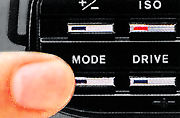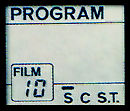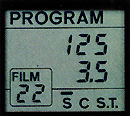 |
|
The Minolta 7000's AE Lock becomes an invaluable aid in difficult lighting situations where areas of extreme light or dark are prevalent. Quickly, easily and automatically, this essential SLR feature allows you to maintain proper exposure on your subject no matter how contrasty the lighting may be.
 |
Simply activate metering by touching the camera's operating button, approach the subject to measure subject brightness, depress the AE Lock button, move back, recompose your photograph and fully release the shutter. The Minolta 7000's AE Lock automatically adjusts exposure metering to compensate. |
![]()
Combine any shutter speed and aperture you wish for unforgettable effects. Deliberate
high key effects produce a memorable photograph in select situations.
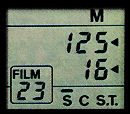 |
When you wish to create special effects by intentionally over- or underexposing, simply set the Minolta 7000 to its Manual mode, Now select both aperture and shutter speed on your own. LCD viewfinder indicators will inform you if you are over- or underexposing, comparing your exposure selection to that derived from the camera's ongoing metering. |
![]()
It verifies essential exposure data as you shoot
The viewfinder of the Minolta
7000 contains all essential exposure data readouts to assure you of optimum exposure
results.
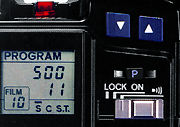 |
There is no need to glance away from the viewfinder as you shoot, depriving you of valuable creative seconds that may well make the difference between a great photograph and an ordinary one, Exposure data, focus signals, flash signals and exposure warnings are indicated in the LCD digital display just below the viewfinder's bright Acute Matte focusing screen. |
In low lighting conditions, the viewfinder LCD digital display will light up automatically as long as the main switch has been turn on to keep you as fully informed in the dark.
![]()
Allow you to recompose anyway you want
The first generation of AF technologies were still confined to ensuring the operation
of autofocus was reliable and precise rather than putting emphasize fulfilling needs
of on action bound photographers. So you may find virtually all early AF cameras
has a focus hold feature. The Minolta 7000's Focus Hold lets you recompose with your
main subject anywhere within the film frame, while you still retain sharp autofocus
on the main subject.
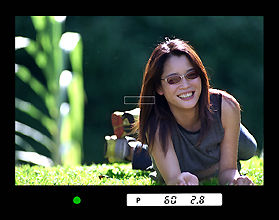 |
Using Focus Hold is simple. First, center the subject in the viewfinder's autofocus frame. Partially depress the camera's operating button and hold it there. Now reposition your subject anywhere you wish within the viewfinder frame. And then fully depress the operating button to release the shutter. The only problem in this operation was, the exposure lock didn't double act as an Exposure Lock. |
![]()
Autofocus and automatic-exposure photography Up to 2 fps.
The Minolta 7000's body-integral motor drive permits photographing fast action sequences
up to two frames per second. Although the continuous mode is not the best performing
AF SLR available but still, by keeping the operating button fully depressed in continuous
drive mode, you can still able to capture some dynamic, fast-moving action.

The Minolta 7000's Key Control operation lets you easily, quickly and accurately direct full camera operation, enabling you to respond instantly to the shooting conditions at hand. This has facilitated the complexity of modern AE camera operation by using fussy logic in push keys control rather where traditional dials and rings have its limitation covering full scale AE capabilities.
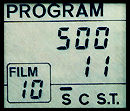 |
Full data readouts are available both in the camera's data display panel and in the viewfinder. This innovative system is an entirely new* for any SLR camera control. it gives you more simplified, accurate data input and, therefore, more accurate camera response. Its ''double entry'' keying helps eliminate the chance of inadvertently making an error, too'. |
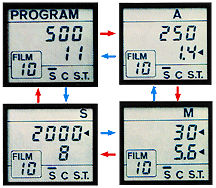 |
|
|
 |
|
|
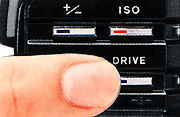 |
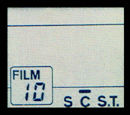 |
|
 |
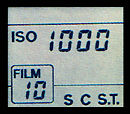 |
|
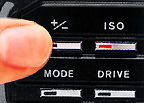 |
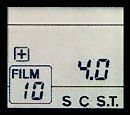 |
|
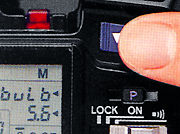 |
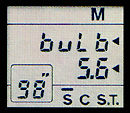 |
|
![]()
Specification | Main
Reference Map
Instruction
Manual
for Maxxum 7000
(6 Parts)
First Generation Minolta
AF Lenses
Minolta XD-7/XD-11 |
Minolta XK/XM/X-1 |
Minolta X-700 |
Maxxum
7000
| Maxxum 7000i
| Message
Board
| for Minolta X-700 | Maxxum 7000
| Maxxum 7000i
| Message
Board
| for
your Minolta optics in a shared environment
| Message
Board
| Specifically
for Dispose or
Looking for
Minolta Photographic Equipment
About this photographic site.
Home - Photography in Malaysia |
Credit: Mr Aaron Oh, for lending his old Maxxum 7000 brochure to prepare certain content appeared in this site; LEONID.SL<leonid.sl@prodigy.net> for his great image of the Maxxum 9000; Johannes Huntjens <yawngie@msn.com>, LT Jack B. Nunley <jnunley@insightbb.com> and "Jarret LaMark" <jlamark@wbhunt.com> huntsphotoandvideo.com for their generosity for granting permission to use some of the Maxxum 7000 images appeared in this site; Lapapl@aol.com for his image of the Minolta Maxxum 7000 AF Body / Program Back 70;"Camera Works" <cameraworks@qwest.net> for some superb view of the camera; Dan Dorsey <Fotowv123@cs.com> for his shots of the 7000 Body w/ Org. Box & Manual; "Rehmat Iqbal" <mimifour@hotmail.com><srafiq@houston.rr.com> for being so considerate and helpful. Certain content and images appeared in this site were either scanned from official marketing leaflets, Instruction Manual(s) & brochures published by Minolta and/or contribution from surfers who claimed originality of their work for educational purposes. The creator of the site will not be responsible for may discrepancies arise from such dispute except rectifying them after verification. "Minolta", "Rokkor", "X-700", "Dynax" & "Maxxum" are registered trade names of Minolta Optical Inc., Japan. A site dedicated to all Minolta fans worldwide. Site made with an Apple IMac.
